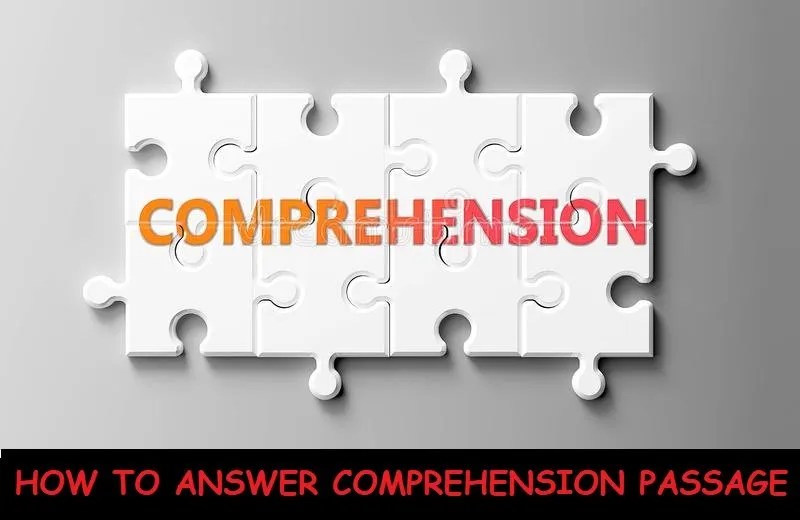
Comprehension passage is the most commonly set question in English language in WAEC, NECO or JAMB. They form part of the sections that carries the highest marks. In WAEC and NECO, comprehension passages carry at least 50 marks. This goes a long way in determining your pass or fail status in both JSSCE and WASSCE.
I have here all you need to know on how to correctly answer questions on comprehension passages in any exam or test you are being examined.
First we need to define what comprehension is about before delving into the useful hints as well as the step-by-step approach on how to answer comprehension passages.
What is Comprehension? This is a process of reading, understanding and explaining what is written in a passage. For every comprehension exercise, there must be a passage to be read.
The purpose of comprehension exercise is to test students understanding of a given passage. In comprehension, the thoughts of the writer are presented to students for reading, understanding and explaining
USEFUL HINTS ON COMPREHENSION PASSAGES
Comprehension is to test students understanding of the passage. After reading the passage, you can interpret or explain the contents of the passage in your own words. It is when you do this that you can claim to have understood the passage. Although you are at liberty to make use of words from the passage. you must be careful not to be too reckless in copying down the portion of the passage which you feel answers the question.
Always restrict your answer to your understanding of the passage one is interested in your personal opinion on the topic discussed in the passage. In addition to this, you are not concerned with the correctness or the facts or information in the passage. You should not allow your beliefs or opinion to affect your reactions or answers to the passage.How To Answer Comprehension Passages: Step-By-Step Approach
To gain full marks in comprehension passage in WAEC or NECO, the body demands a careful step-by step approach. Majority of the students who fail comprehension exercises fail because they are in a hurry to answer without taking time to understand the passage. The suggested steps are the following:
Please note that the reading of the passage must be done quickly with full attention in order to have a total understanding of the passage. It is after understanding the passage, you can now go back to the questions and start answering them.
Step 3 – Though you are free to use the words from the passage in your answers, you must be able to use your own words or expression to show your understanding of the passage.
Step 4 –Where your answers should show comparison between two or more things mentioned in the passage, your answer must indicate or show the comparison.
Step 6 – When you are substituting a word or phrase with another word or phrase, if the word or phrase is an adjective or noun or in a particular tense, your answer should be in a similar form.

